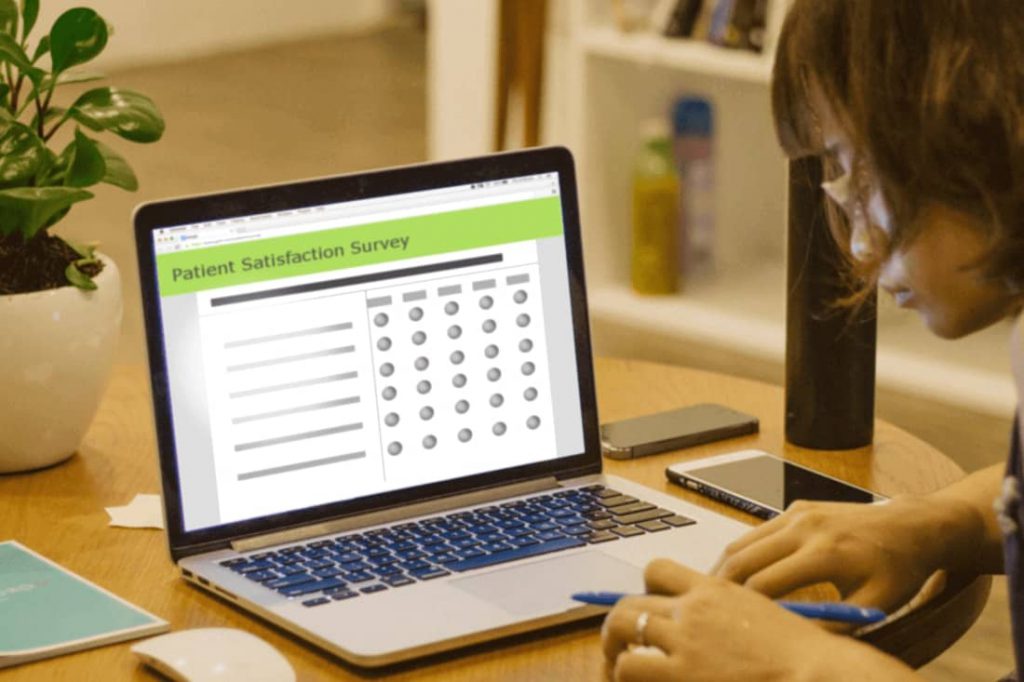Patient Satisfaction Surveys in Healthcare: Best Practices to Capture and Act on Patient Feedback
Think back to the last time you visited a clinic. Did you walk out feeling cared for and respected or frustrated and unheard? That feeling matters more than many providers realize. In fact, most patients who don’t come back to your healthcare practice aren’t doing so because of clinical mistakes (though those matters too), but because of poor patient experiences.
This is where patient satisfaction surveys come into play. Patient surveys are not only a tool for measuring patient satisfaction scores but also a way to improve care delivery, boost outcomes, and even influence reimbursements. In fact, 68% of satisfied patients are likely to recommend their healthcare providers to others.
Unfortunately, many practices still struggle to capture timely and accurate feedback, as they mostly rely on outdated methods like paper surveys or delayed email questionnaires that arrive weeks later. By the time patients receive them, they may not even remember the details of their visit, which could lead to incomplete or inaccurate feedback. The result: you get little to no valuable insight.
Why patient satisfaction surveys matter in healthcare?
Patient satisfaction surveys in healthcare are more than just questionnaires; they’re a reflection of how patients perceive their care journey. From front-desk interactions to clinical care and billing, every touchpoint contributes to patient sentiment. By systematically gathering feedback, practices can:
- Identify strengths and weaknesses in service delivery
- Reduce the risk of negative online reviews
- Improve staff performance and patient loyalty
At the end of the day, patients want to know that their voice matters. When they do, they’re more likely to return and recommend your practice.
So, if you want your practice to thrive, understanding patient sentiment can’t be an afterthought; it has to be part of your strategy. That’s where smart, automated patient survey tools come into the picture.
How automated patient survey tools make a difference?
Unlike traditional survey methods, automated patient survey tools deliver surveys digitally, on time, and at scale.
They are:
- Easy to scale: Send surveys to thousands of patients with minimal staff effort.
- Timely feedback: Automated scheduling ensures surveys are delivered immediately after visits, when experiences are still fresh.
- Accurate results: Automation reduces human error and provides more reliable insights.
- Data-driven reporting: Instant analysis helps practices identify trends and improvement areas quickly.
Types of patient surveys in healthcare:
Feedback is valuable at different stages of the care journey. Here are some examples of patient surveys in healthcare that practices can use:
- Patient rating surveys after appointments
- Periodic patient satisfaction surveys to track ongoing improvements
- Pre-op and post-op surveys for procedure-specific insights
- Health risk assessment surveys for preventive care
- Net Promoter Score surveys to measure patient loyalty
Surveys can be designed to capture patient details or kept anonymous to encourage more non-biased responses. Both approaches are helpful, depending on the purpose.
Best practices for patient satisfaction survey in healthcare:
To get meaningful insights, practices can follow these structured and effective practices when designing and deploying patient surveys:

- Set clear objectives: Identify specific goals you want to achieve with each survey to ensure the questions are relevant.
- Keep it concise: Most patients will not complete their surveys if they are overwhelmed with excessive questions. Create surveys that aren’t time-consuming for patients to fill out.
- Use different question types: From multiple choice questions, open-ended questions, and ratings, use various question types to capture feedback.
- Create surveys for different appointment types: Rather than using generic questions for your entire patient population, tailor surveys to different types of appointments to get specific feedback.
- Identify appropriate time: Send a patient survey at an ideal time, i.e., after a visit. Also, be considerate about your patients’ schedules and avoid sending at odd times.
- Target specific segments: Segment your surveys based on location, provider, race, ethnicity, age, and gender to gather specific insights.
- Multiple distribution channels: Send survey links via email, SMS, or both to reach patients through their preferred method.
- Anonymous and non-anonymous surveys: Offer both options to encourage honest feedback.
- Analyze and identify trends: Capture patient feedback and analyze trends to identify areas of improvement.
Improving Patient Responses with an Automated Patient Survey Platform
When providers consistently measure and act on patient satisfaction scores, they not only meet evolving expectations but also raise the bar on quality, safety, and performance.
With CheckinAsyst’s automated, customizable patient satisfaction surveys, gathering feedback becomes effortless for both staff and patients. The platform makes it simple to:
- Capture timely insights about intake experiences
- Quantify satisfaction scores with accuracy
- Identify areas for improvement across the care journey
Because the surveys are fully customizable, practices can tailor them for different objectives, while saving staff from hours of manual work.
Take a look at one of our customers, Premier Surgical Associates. Previously, the clinic used to send out surveys manually which took hours of the staff’s time. And when the surveys went out late, the response rate was poor.
After switching to CheckinAsyst, the practice saw a
- 5x increase in survey responses.
- And what’s more, they embedded their Google page in the survey to persuade patients to leave a review. This led to a 2x increase in positive Google reviews.
If you’re looking to measure patient satisfaction more effectively, it may be time to explore how an automated survey platform can help you boost feedback, build loyalty, and attract new patients. Talk to us.







